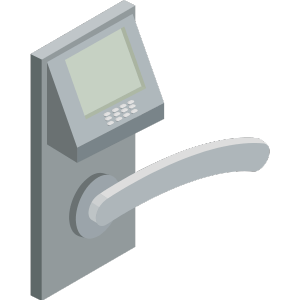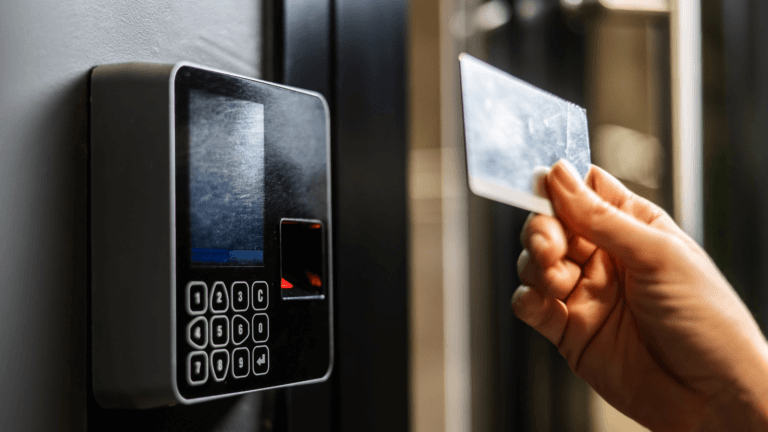Installing a Keyless Entry System: A Step-by-Step Guide
Installing a keyless entry system can significantly enhance the security and convenience of your home or business. Whether you’re upgrading from traditional locks or seeking to improve accessibility, a keyless entry system offers a modern and efficient way to control access. In this comprehensive guide, we will walk you through the step-by-step process of installing a keyless entry system, enabling you to make the most of this advanced security solution.
Step 1: Choose the Right Keyless Entry System
 Before diving into the installation process, it’s crucial to select a keyless entry system that aligns with your specific needs and preferences. Consider factors such as the type of property (residential or commercial), preferred access method (keypad, biometric, Bluetooth, etc.), and any additional features you may require, such as remote access capabilities or integration with a smart home system.
Before diving into the installation process, it’s crucial to select a keyless entry system that aligns with your specific needs and preferences. Consider factors such as the type of property (residential or commercial), preferred access method (keypad, biometric, Bluetooth, etc.), and any additional features you may require, such as remote access capabilities or integration with a smart home system.
Step 2: Gather the Necessary Tools and Equipment
 To ensure a smooth installation process, gather the following tools and equipment:
To ensure a smooth installation process, gather the following tools and equipment:
- Screwdriver (Phillips and flat-head)
- Drill and drill bits
- Measuring tape
- Level
- Pencil
- Wire cutters/strippers (if wiring is involved)
- Batteries or power supply (depending on the system)
- Mounting hardware provided with the keyless entry system
Step 3: Prepare the Installation Area
Prepare the installation area by removing any existing hardware, such as traditional locks or previous keyless entry systems. Ensure the door or entryway is clean and free from any obstructions that may hinder the installation process.
Step 4: Install the Keyless Entry System
For Keypad Entry Systems:
- Positioning: Determine the optimal placement of the keypad on the door or entryway. Use a level to ensure it is straight, and mark the positions for screw holes with a pencil.
- Mounting: Securely mount the keypad using the provided mounting hardware and a screwdriver. Double-check the alignment and level before fully tightening the screws.
- Connect Power: If the keypad requires power, follow the manufacturer’s instructions to connect the power source, whether it be batteries or a wired power supply.
For Biometric or Bluetooth Entry Systems:
- Follow Manufacturer’s Instructions: Carefully follow the manufacturer’s specific installation instructions, as these systems may have unique requirements based on their design and functionality.
- Power Supply: Ensure the system is adequately powered, whether through batteries, a wired connection, or another specified power source.
Step 5: Program and Test the System
 Once the keyless entry system is installed, it’s time to program it and conduct thorough testing to ensure proper functionality.
Once the keyless entry system is installed, it’s time to program it and conduct thorough testing to ensure proper functionality.
Programming:
- Follow the manufacturer’s instructions to program user codes, fingerprints, or any other access credentials required for the system.
Testing:
- Test the system by entering user codes, using biometric authentication, or activating Bluetooth access, depending on the system’s features.
- Ensure the system locks and unlocks as intended, and that all access methods are functioning correctly.
Step 6: Additional Considerations
- Security Configuration: Configure any additional security settings offered by the keyless entry system, such as auto-locking features or tamper alerts.
- Integration (if applicable): If the keyless entry system integrates with a smart home or security system, follow the provided instructions for seamless integration.
Step 7: Maintenance and Troubleshooting
 Familiarize yourself with the recommended maintenance procedures for your specific keyless entry system. Additionally, keep the manufacturer’s contact information handy for troubleshooting and technical support, should the need arise.
Familiarize yourself with the recommended maintenance procedures for your specific keyless entry system. Additionally, keep the manufacturer’s contact information handy for troubleshooting and technical support, should the need arise.
Conclusion
Installing a keyless entry system can elevate the security and convenience of any property, providing a modern and adaptable solution for access control. By carefully selecting the right system, following a systematic installation process, and conducting thorough testing, you can ensure a successful and effective implementation of your keyless entry system. With the right tools and attention to detail, you can enjoy the benefits of enhanced security and streamlined access control offered by a keyless entry system.
FREQUENTLY ASKED QUESTIONS
What is a keyless entry system?
A keyless entry system is a modern access control solution that allows entry to a building or vehicle without the use of traditional keys. It typically involves using electronic devices such as keypads, smart locks, or biometric scanners.
Why should I consider installing a keyless entry system?
Keyless entry systems offer numerous benefits, including enhanced security, convenience, and flexibility. They eliminate the need for physical keys, reduce the risk of unauthorized access, and provide customizable access options.
What are the components of a keyless entry system?
Keyless entry systems typically include electronic locks, access control panels, keypads or touchpads, proximity cards or key fobs, and often integrate with smartphones or other smart devices.
How do I install a keyless entry system?
Installing a keyless entry system involves several steps, including selecting the right system for your needs, preparing the installation site, mounting the electronic components, wiring if necessary, programming user codes or credentials, and testing the system for functionality.
Do I need professional assistance to install a keyless entry system?
While some keyless entry systems can be installed by DIY enthusiasts, complex systems or integration with existing security infrastructure may require professional installation to ensure proper functionality and security.
Can a keyless entry system be integrated with existing security systems?
Yes, many keyless entry systems are designed to integrate seamlessly with existing security systems, such as alarms, surveillance cameras, and access control systems, providing comprehensive security solutions.
What maintenance is required for a keyless entry system?
Keyless entry systems typically require minimal maintenance, such as periodic battery replacement for electronic components, software updates for smart systems, and ensuring physical components remain clean and operational.
Are keyless entry systems secure?
Keyless entry systems employ advanced encryption and authentication protocols to ensure security. However, it’s essential to choose reputable brands and follow best practices for securing access credentials and monitoring system activity.
Can a keyless entry system be retrofitted to existing doors or locks?
Yes, many keyless entry systems are designed for retrofitting, allowing them to be installed on existing doors or locks without extensive modifications. However, compatibility and installation requirements may vary depending on the system and door type.
Where can I find additional support or troubleshooting assistance for my keyless entry system?
Manufacturers typically provide detailed installation guides, user manuals, and customer support services to assist with installation, programming, and troubleshooting of keyless entry systems. Additionally, online forums and community resources may offer valuable insights and assistance from other users and experts.


